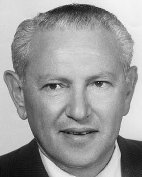
George Washington Carver (1864-1943), an American agricultural extension educator, from Alabama's Tuskegee Institute, was the most well known promoter of the peanut as a replacement for the cotton crop, which had been heavily damaged by the boll weevil. He compiled 105 peanut recipes from various cookbooks, agricultural bulletins and other sources. In his 1925 research bulletin called How to Grow the Peanut and 105 Ways of Preparing it for Human Consumption, he included three recipes for peanut cookies calling for crushed or chopped peanuts.
It was not until the early 1930s that peanut butter was listed as an ingredient in the cookies.
Early peanut butter cookies were either rolled thin and cut into shapes, or else they were dropped and made into balls; they did not have fork marks. The first reference to the famous criss-cross marks created with fork tines was published in the Schenectady Gazette on July 1, 1932. The Peanut Butter Cookies recipe said: "shape into balls and after placing them on the cookie sheet, press each one down with a fork, first one way and then the other, so they look like squares on waffles."
Pillsbury, one of the large flour producers, popularized the use of a fork in the 1930s. The Peanut Butter Balls recipe in the 1933 edition of Pillsbury's Balanced Recipes instructed the cook to press the cookies using fork tines. These early recipes do not explain why the advice is given to use a fork, though. The reason is that peanut butter cookie dough is dense, and unpressed, each cookie will not cook evenly. Using a fork to press the dough is a convenience of tool; bakers can also use a cookie shovel (spatula).
From Mr. Food
Our melt-in-your-mouth recipe for Soft Peanut Butter Cookies will satisfy all your peanut butter lovers, for sure. We even included the traditional fork hash marks on these peanut butter cookies! Serve these homemade peanutty tasting cookies with a cold glass of milk and watch them disappear from your cookie jar. (Good thing they're so easy to bake!)
- 1 cup sugar
- 1 cup creamy peanut butter
- 1 egg
- 1 teaspoon vanilla extract
- Preheat oven to 325º.
- In a medium bowl, using a spoon, mix all ingredients until just blended. Drop mixture by rounded teaspoonfuls onto a baking sheet and press a crisscross pattern into each drop with a fork.
- Bake 10 to 11 minutes, or until light golden. Cool before removing from baking sheet.
Notes
- For a little variety, try pressing colored candies like M & M's into the cookies immediately after removing them from the oven. Kids of all ages love them!
This day marks the anniversary of the first Montgomery Wards mail order catalog. On this day in 1872, Aaron Montgomery Ward of Chicago produced a catalog designed for direct order via mail. He aimed to remove the middleman from the business of buying and selling. As a result, he also drastically lowered prices.
The very first catalog consisted of an 8 by 12-inch single sheet of paper. On it, Ward included the merchandise for sale, price list, and ordering instructions. Before long, the Montgomery Wards single-page list of products grew into a 540 page illustrated book selling over 20,000 items.
It didn’t take long for enterprising merchants to copy Montgomery Wards’ idea. One notable merchant, Richard Warren Sears, mailed his catalog in 1896. As others entered the field, catalog sales grew. By 1971, catalog sales of major United States firms exceeded more than $250 million in postal revenue.
It’s interesting to note, according to the National Mail Order Association, Aaron Montgomery Ward wasn’t the first to conceive of the mail order catalog. In the United States. Benjamin Franklin may have formulated the first basic mail order concept. He produced a catalog to sell scientific and academic books. Franklin also receives credit for offering the first mail-order guarantee: “Those persons who live remote, by sending their orders and money to B. Franklin may depend on the same justice as if present.”
Today, mail order catalogs have been replaced with internet websites. Additionally, the term “mail-order” has been replaced with the term “online shopping.”
HOW TO OBSERVE NATIONAL MAIL ORDER CATALOG DAY
While our catalogs are digital these days, which ones are your favorites? Nearly every retail business has an online presence and with that, their catalog of products grows, varies, and changes. It’s an excellent day to support your small online business by shopping with them, sharing their products, or giving them a review. Is there a product you wish they’d carry? Let them know! Many retailers seek customer feedback to improve their business. What are some of you’re favorite purchases from a mail-order catalog (paper or digital)?
Mail Order FAQ
Q. Do mail order catalogs still exist?
A. Yes, they do, and they are increasing in popularity. Many companies are issuing small catalogs to grab customers’ attention. Most companies that have catalogs also have websites to sell their products.
Q. What do mail order catalogs sell?
A. Just about anything from fashion and accessories to medical equipment. Some catalogs specialize while others offer a variety of merchandise.
Q. Can I still order directly from a website if I receive a catalog?
A. Yes, but don’t hesitate to look through the entire catalog. Some companies may include special QR codes and discount codes.













